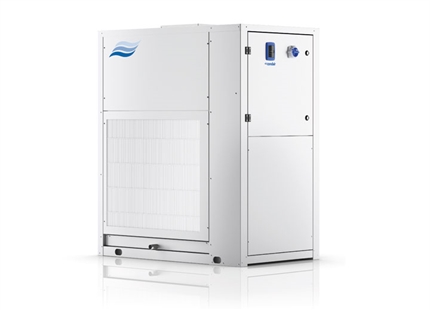Ilmankuivaimet ja kosteudenhallinta arkistoissa ja varastotiloissa
Sopimaton säilytysympäristö on yksi tavallisimmista syistä arkistojen vaurioitumiseen. Saadakseen täydellisen ympäristön pitkäaikaiseen säilytykseen, on neljän pääasian oltava kunnossa: lämpötila, suhteellinen kosteus, valo ja ilman epäpuhtaudet. Valaistus ja ilman epäpuhtaudet on kohtuullisen helppoa pitää kunnossa. Lämpötilan ja kosteuden suhteen tilanne onkin monimutkaisempi.
Säilytysolosuhteet, joissa kosteustaso on korkea, ovat mainio paikka tuholaishyönteisille ja homeelle. Liian kuivat olosuhteet taas voivat haurauttaa arkistomateriaalia. Pelkkä kosteustaso ei siis riitä, vaan toivottujen olosuhteiden vakaus on myös ratkaisevaa. Äkilliset lämpötilan vaihtelut muuttavat suhteellista kosteustasapainoa ja voivat vahingoittaa arkistoesineitä. Lämpötila voi myös vaikuttaa siihen, kuinka nopeasti esineen kunto heikkenee, koska kemialliset reaktiot tapahtuvat nopeammin lämpimissä olosuhteissa.
Se mikä on oikea kosteus- ja lämpötilataso riippuu aina siitä, mitä varastoidaan. Asiantuntijaneuvoja tulisi kuulla projektikohtaisesti. Orgaaninen materiaali, kuten paperi, nahka, puu ja luonnonkuitu, vaatii tyypillisesti 13-20°C lämpötilan ja 35-60% suhteellisen kosteuden. Säätötarkkuuden tulisi olla parempi kuin +/-5 %. Epäorgaaninen materiaali suosii alle 30% suhteellista kosteustasoa, koska liika kosteus aiheuttaa korroosiota ja ruostetta.
Usein luullaan lämmityksen olevan paras tapa hallita arkistotilojen suhteellista kosteutta. Vaikka suhteellinen kosteus voi muuttua lämpötilan noustessa, ilman kosteuspitoisuus ei vähene. Pelkkä lämmitys on sekä tehoton että kallis arkiston kosteudenhallintatapa. Kun arkistoon valitaan oikeanlainen ilmankuivain, voi energiansäästö lämmitykseen verrattuna olla jopa 60 %.
Kohteen maantieteellinen sijainti sekä varastoitavat artefaktit määrittelevät sen minkälainen ilmankostutus- ja kuivauspaketti kannattaa valita. Suhteellisen kosteuden hallinta on suoraan yhteydessä lämpötilan hallintaan, eli lämpötilaa pitäisi pystyä säätämään ainakin +/- 2 °C.
Myös kosteusantureiden tarkkuuteen tulisi kiinnittää huomiota. Yleisimmin käytettyjen LVI-anturien tarkkuus on parhaimmillaan +/-4 % ja hystereesi voi olla jopa kaksinkertainen, jolloin kokonaissäätötarkkuus on noin +/-7,5 %. Reaktionopeus ja anturin sijoitus ovat tärkeitä tekijöitä. Anturin reaktionopeuden tulisi olla alle 30 sekuntia.
Tyypillisesti jokaisella arkistolla on oma erillinen kosteudenhallintajärjestelmä, koska jokaisessa vallitsee hieman erilaiset olosuhteet. Tällöin tarvitaan suurempi määrä pienempiä järjestelmäkokonaisuuksia. Laajempi LVI-keskusjärjestelmä sopii tilanteeseen, jossa koko rakennus on varattu yhdenkaltaiselle artefaktille.
-
Orgaanisesta materiaalista valmistetut tuotteet, kuten paperi, puu ja tekstiilit, reagoivat muutoksiin kosteustasossa muuttamalla muotoaan. Jatkuva olosuhteiden muutos kosteuden vaihtelun myötä voi vaurioittaa arkistoesineitä. Lisäksi orgaanisiin materiaaleihin on suurempi riski muodostua hometta kun kosteustaso on korkeampi.
-
Ihanteellinen kosteus riippuu kahdesta näkökulmasta, varastoiduista arkistoesineistä sekä varastotilan lämpötiloista. Orgaanisten tuotteiden, kuten paperin, puun ja tekstiileiden, ihanteellinen suhteellinen kosteustaso on 35–60% lämpötilan ollessa 13–20 astetta. Epäorgaaninen materiaali, kuten metalli, kaipaa yleensä kosteustasoa 35–50%RH. Jotkut metalliesineet säilyvät parhaiten alle 20%RH jolloin korroosiota ei muodostu.
-
Pelkällä lämmityksellä ei arkisto pysy kuivana. Suhteellinen kosteus kyllä vähenee, mutta ei absoluuttinen kosteus. Absoluuttinen kosteus ilmaisee, montako grammaa vesihöyryä sisältyy kuutiometriin ilmaa.
Jotta arkisto pysyisi kuivana, on absoluuttista kosteutta alennettava fyysisesti vähentämällä ilmassa olevan veden määrää. Tähän päästään ainoastaan ilmankuivaimen avulla. Kuivaaminen pelkästään lämmittämällä olisi paljon kalliimpaa.
Ilmankuivain käyttää tyypillisesti 60 % vähemmän energiaa verrattuna tilan suoraan lämmittämiseen.
-
Julkisten tilojen ilmankuivaamiseen on kahta teknologiaa: kondensoiva ja adsorptio.
Kondensoiva ilmankuivain toimii hyvin yli 20 mutta alle 35 asteen varastolämpötiloissa. Sillä saavutetaan 45%RH - 95%RH suhteellinen kosteus. Matala suhteellinen kosteus, alle 40%, on kondensoivalla ilmankuivaimella vaikeampi saada. Tämän tyyppisen järjestelmän säätötarkkuus on noin +/-10%RH. Kondensoivassa ilmankuivaimessa tulee olla joko tyhjennysliitäntä tai sen kondenssivesisäiliö tulee päivittäin tyhjentää.
Adsorptio-ilmankuivain toimii paljon laajemmalla lämpötilaskaalalla: -30°C - +40°C ja suhteellisella kosteustasolla 0-100%. Se saa paljon alhaisemman suhteellisen kosteustason, tarvittaessa jopa alle 10%RH, ja siinä on vakaampi säätö, yleisesti +/-2 % RH tai parempi. Viemäriliitäntää ei tarvita, mutta kanavoitu märkäilmanpoistoaukko tarvitaan poistamaan kosteutta käsiteltävältä alueelta.
-
Se riippuu monesta asiasta, esimerkiksi arkiston materiaaleista, maantieteellisestä sijainnista, tilan koosta, toleranssitasosta, lämpötilasta ja ilmanvaihtovolyymista. Pieni, siirrettävä haihdutuskostutin on taloudellinen vaihtoehto, mutta siinä on huono säätötarkkuus, se vaatii jatkuvaa huoltoa, eikä se sovellu isoihin tiloihin.
Elektrodikäyttöinen kostutin on pätevämpi ratkaisu - joko osana ilmanvaihtokanavan LVI-järjestelmää tai asennettuna suoraan kostutettavaan tilaan. Siinä on yleensä +/-7,5%RH säätötarkkuus.
Vastuskäyttöisen höyrykostuttimen pääomakustannus on korkeampi, mutta sen säätötarkkuus on +/-3 % tai parempi ja se kaipaa vähemmän varaosia ja huoltoa.
Condair-kosteudenhallinnan hyödyt arkistoissa:
Laaja kokemus useista maailman johtavista arkistoista
Kattava tuotevalikoima ilmankostuttimia ja -kuivaimia
Vähän kuluttavat ja harvoin huoltoa tarvitsevat ratkaisut
Kattava palvelu, jossa suunnittelu, asennus ja huolto mukana
Optimaalinen ympäristö täydelliseen säilytykseen

Condair Inside

Ilmainen 10-kohtainen opas ilmankuivaimen valintaan
Lataa ilmainen 10-kohtainen opas ilmankuivaimen valintaan. Saat helposti luettavan yleiskatsauksen ilmankuivainprojektien suunnitteluun.
Se kattaa järjestelmän kokonaissuunnittelun, mitoituksen, psykrometrian, energianäkökulmat ja paljon muuta.
Juttele asiantuntijan kanssa arkistojen kuivaamisesta ja kosteudenhallinnasta
Tämäkin saattaisi kiinnostaa sinua...
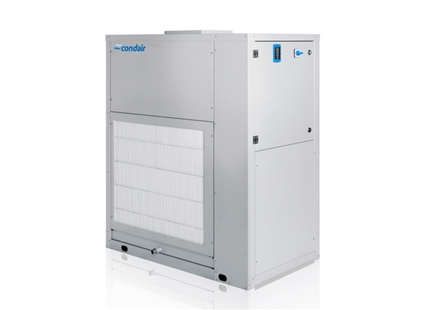
Condair DC -kondensoivat ilmankuivaimet
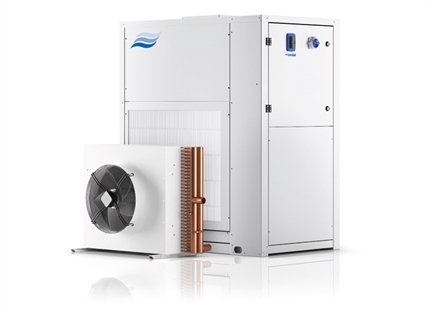
Condair DC-N -kondensoiva ilmankuivain, jossa jäähdytystoiminto
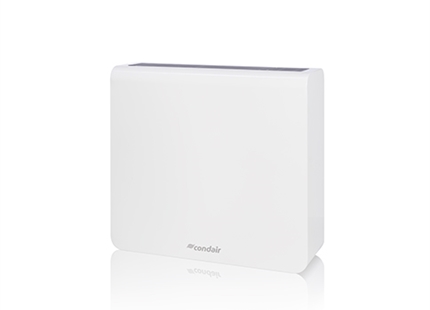
Seinälle ja kattoon asennettavat Condair DC -kondensoivat ilmankuivaimet
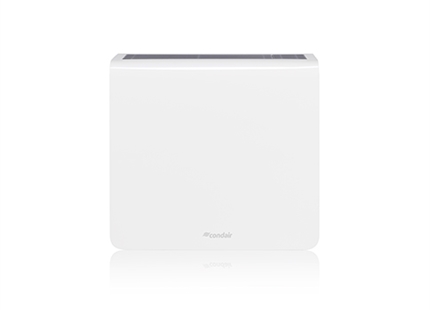
Condair DP -ilmankuivaimet uima-allastiloihin
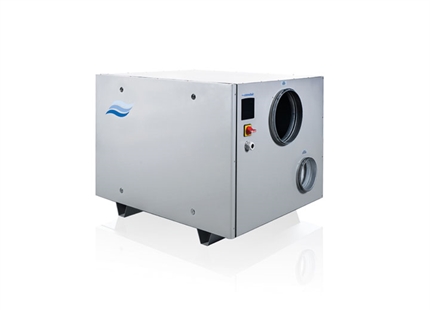
Condair DA -adsorptio-ilmankuivaimet
